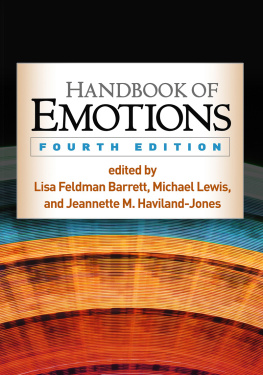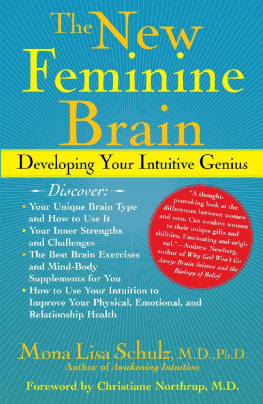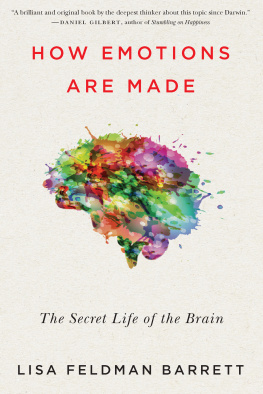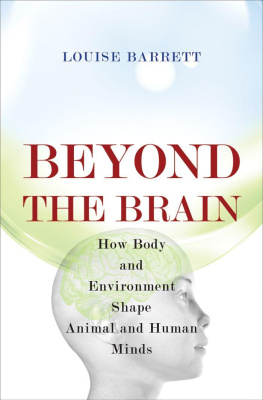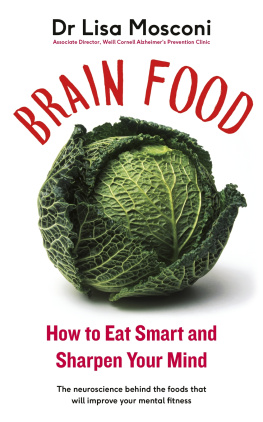Lisa Feldman Barrett - Seven and a Half Lessons About the Brain
Here you can read online Lisa Feldman Barrett - Seven and a Half Lessons About the Brain full text of the book (entire story) in english for free. Download pdf and epub, get meaning, cover and reviews about this ebook. year: 2020, publisher: Houghton Mifflin Harcourt Publishing Company, genre: Religion. Description of the work, (preface) as well as reviews are available. Best literature library LitArk.com created for fans of good reading and offers a wide selection of genres:
Romance novel
Science fiction
Adventure
Detective
Science
History
Home and family
Prose
Art
Politics
Computer
Non-fiction
Religion
Business
Children
Humor
Choose a favorite category and find really read worthwhile books. Enjoy immersion in the world of imagination, feel the emotions of the characters or learn something new for yourself, make an fascinating discovery.
- Book:Seven and a Half Lessons About the Brain
- Author:
- Publisher:Houghton Mifflin Harcourt Publishing Company
- Genre:
- Year:2020
- Rating:4 / 5
- Favourites:Add to favourites
- Your mark:
- 80
- 1
- 2
- 3
- 4
- 5
Seven and a Half Lessons About the Brain: summary, description and annotation
We offer to read an annotation, description, summary or preface (depends on what the author of the book "Seven and a Half Lessons About the Brain" wrote himself). If you haven't found the necessary information about the book — write in the comments, we will try to find it.
Seven and a Half Lessons About the Brain — read online for free the complete book (whole text) full work
Below is the text of the book, divided by pages. System saving the place of the last page read, allows you to conveniently read the book "Seven and a Half Lessons About the Brain" online for free, without having to search again every time where you left off. Put a bookmark, and you can go to the page where you finished reading at any time.
Font size:
Interval:
Bookmark:
Copyright 2020 by Lisa Feldman Barrett
Illustrations by Flow Creative (flowcs.com)
All rights reserved
For information about permission to reproduce selections from this book, write to or to Permissions, Houghton Mifflin Harcourt Publishing Company, 3 Park Avenue, 19th Floor, New York, New York 10016.
hmhbooks.com
Library of Congress Cataloging-in-Publication Data
Names: Barrett, Lisa Feldman, author.
Title: Seven and a half lessons about the brain / Lisa Feldman Barrett.
Description: Boston : Houghton Mifflin Harcourt, 2020. | Includes bibliographical references and index. | Summary: From the author of How Emotions Are Made, a myth-busting primer on the brain, in the tradition of Seven Brief Lessons on Physics and Astrophysics for People in a HurryProvided by publisher.
Identifiers: LCCN 2020023431 (print) | LCCN 2020023432 (ebook) | ISBN 9780358157144 (hardcover) | ISBN 9780358157120 (ebook)
Subjects: LCSH: BrainPopular works. | NeurosciencesPopular works.
Classification: LCC QP376 .B357 2020 (print) | LCC QP376 (ebook) | DDC 612.8/2dc23
LC record available at https://lccn.loc.gov/2020023431
LC ebook record available at https://lccn.loc.gov/2020023432
Cover design by Martha Kennedy
Cover photograph Christoph Burgstedt / Science Source
Author photograph Mark Karlsberg / Studio Eleven
Droodles excerpted from The Ultimate Droodles Compendium: The Absurdly Complete Collection of All the Classic Zany Creations of Roger Price. Copyright 2019 by Tallfellow Press, Inc. Used by permission. All rights reserved.
v1.1020
To Barb Finlay
and my other colleagues
who taught me the craft of neuroscience,
for their great generosity and even
greater patience
I wrote this book of short, informal essays to intrigue and entertain you. Its not a full tutorial on brains. Each essay presents a few compelling scientific nuggets about your brain and considers what they might reveal about human nature. The essays are best read in order, but you can also read them out of sequence.
As a professor, I usually include loads of scientific details in my writing, such as descriptions of studies and pointers to journal papers. For these informal essays, however, Ive moved the full scientific references to my website, sevenandahalflessons.com.
Also, at the end of this book, youll find an appendix with selected scientific details. It offers a bit more depth on some essay topics, explains that certain points are still debated by scientists, and gives credit to other people for some interesting turns of phrase.
Why are there seven and a half lessons rather than eight? The opening essay tells a story of how brains evolved, but it is just a brief peek into a vast evolutionary historyhence, half a lesson. The concepts that it introduces are critical to the rest of the book.
I hope youll enjoy learning what one neuroscientist thinks is fascinating about your brain and how that three-pound blob between your ears makes you human. The essays dont tell you what to think about human nature, but they do invite you to think about the kind of human you are or want to be.
O NCE UPON A TIME , the Earth was ruled by creatures without brains. This is not a political statement, just a biological one.
One of these creatures was the amphioxus. If you ever glimpsed one, youd probably mistake it for a little worm until you noticed the gill-like slits on either side of its body. Amphioxi populated the oceans about 550 million years ago, and they lived simple lives. An amphioxus could propel itself through the water, thanks to a very basic system for movement. It also had an exceedingly simple way of eating: it planted itself in the seafloor, like a blade of grass, and consumed any minuscule creatures that happened to drift into its mouth. Taste and smell were of no concern because an amphioxus didnt have senses like yours. It had no eyes, just a few cells to detect changes in light, and it could not hear. Its meager nervous system included a teeny clump of cells that was not quite a brain. An amphioxus, you could say, was a stomach on a stick.
Amphioxi are your distant cousins, and theyre still around today. When you look at a modern amphioxus, you behold a creature very similar to your own ancient, tiny ancestor who roamed the same seas.
Can you picture a little wormy creature, two inches long, swaying in the current of a prehistoric ocean, and glimpse humanitys evolutionary journey? Its difficult. You have so much that the ancient amphioxus did not: a few hundred bones, an abundance of internal organs, some limbs, a nose, a charming smile, and, most important, a brain. The amphioxus didnt need a brain. Its cells for sensing were connected to its cells for moving, so it reacted to its watery world without much processing. You, however, have an intricate, powerful brain that gives rise to mental events as diverse as thoughts, emotions, memories, and dreamsan internal life that shapes so much of what is distinctive and meaningful about your existence.
Why did a brain like yours evolve? The obvious answer is to think. Its common to assume that brains evolved in some kind of upward progressionsay, from lower animals to higher animals, with the most sophisticated, thinking brain of all, the human brain, at the top. After all, thinking is the human superpower, right?
Well, the obvious answer turns out to be wrong. In fact, the idea that our brains evolved for thinking has been the source of many profound misconceptions about human nature. Once you give up that cherished belief, you will have taken the first step toward understanding how your brain actually works and what its most important job isand, ultimately, what kind of creature you really are.
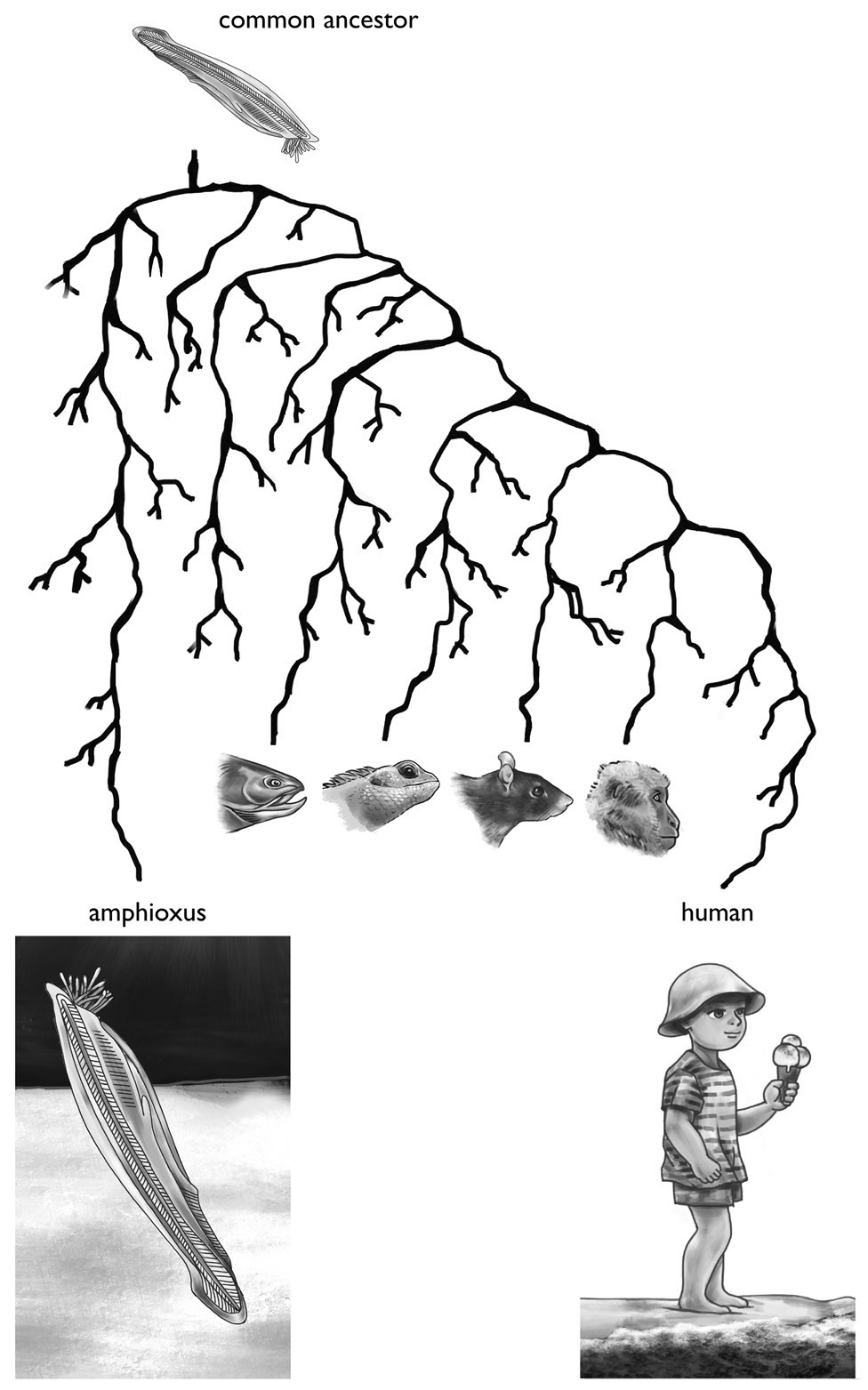
Amphioxi were not our direct ancestors, but we had a common ancestor that was very likely similar to a modern-day amphioxus.
Five hundred million years ago, as little amphioxi and other simple creatures continued to dine serenely on the ocean floor, the Earth entered what scientists call the Cambrian period. During this time, something new and significant appeared on the evolutionary scene: hunting. Somewhere, somehow, one creature became able to sense the presence of another creature and deliberately ate it. Animals had gobbled one another before, but now the eating was more purposeful. Hunting didnt require a brain, but it was a big step toward developing one.
The emergence of predators during the Cambrian period transformed the planet into a more competitive and dangerous place. Both predators and prey evolved to sense more of the world around them. They began to develop more sophisticated sensory systems. Amphioxi could distinguish light from dark, but newer creatures could actually see. Amphioxi had simple skin sensation, but newer creatures evolved a fuller sense of their body movements in the water and a greater sense of touch that allowed them to detect objects by vibration. Sharks today still use this kind of touch sense to locate prey.
With the arrival of greater senses, the most critical question in existence became Is that blob in the distance good to eat, or will it eat me? Creatures who could better sense their surroundings were more likely to survive and thrive. The amphioxus may have been a master of its environment, but it couldnt sense that it had an environment. These new animals could.
The hunters and the hunted also received a boost from another new ability: more sophisticated kinds of movement. For the amphioxus, whose nerves for sensing and moving were woven together, movement was extremely basic. Whenever its stream of food became a trickle, it wriggled in a random direction to plant itself in another spot. Any looming shadow prompted its body to dart away. In the new world of hunting, however, predators and prey alike began to evolve more capable systems for movement, or motor systems, to navigate with greater speed and dexterity. These newer animals could dart, turn, and dive deliberately toward things like food and away from things like threats in ways that suited their environment.
Font size:
Interval:
Bookmark:
Similar books «Seven and a Half Lessons About the Brain»
Look at similar books to Seven and a Half Lessons About the Brain. We have selected literature similar in name and meaning in the hope of providing readers with more options to find new, interesting, not yet read works.
Discussion, reviews of the book Seven and a Half Lessons About the Brain and just readers' own opinions. Leave your comments, write what you think about the work, its meaning or the main characters. Specify what exactly you liked and what you didn't like, and why you think so.


